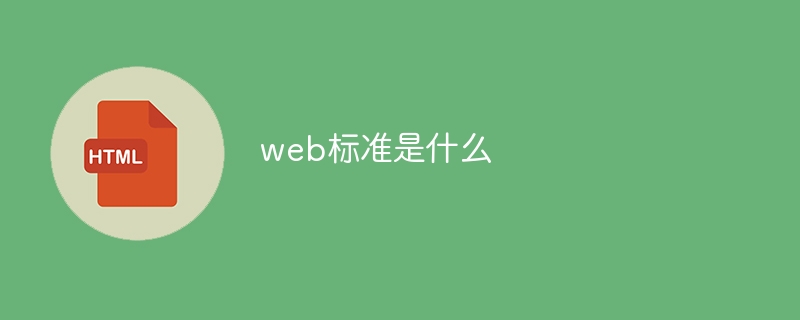Home >Web Front-end >HTML Tutorial >what are web standards
what are web standards
- DDDOriginal
- 2023-09-20 15:09:512519browse
Web standards are a series of specifications and guidelines used to ensure that web pages display and run correctly across different browsers and devices. Including specifications for technologies such as HTML, CSS, and JavaScript. The HTML specification defines various tags and attributes used to create various elements of web pages. The CSS specification defines various style attributes and selectors used to control fonts, Color, layout, animation, etc. JavaScript specifications define syntax, built-in objects and functions, etc., which are used to process user input, respond to events, and modify web page content.

# Operating system for this tutorial: Windows 10 system, Dell G3 computer.
Web standards are a series of specifications and guidelines used to ensure that web pages display and run correctly across different browsers and devices. They include specifications for technologies such as HTML, CSS, and JavaScript, as well as some best practices for web design and development.
HTML (Hypertext Markup Language) is a markup language used to describe the structure of web pages. The HTML specification defines various tags and attributes that are used to create various elements of web pages, such as titles, paragraphs, images, links, etc. By following HTML specifications, developers can ensure that web pages display consistently across different browsers.
CSS (Cascading Style Sheets) is a language used to describe the appearance and style of web pages. CSS specifications define various style attributes and selectors for controlling fonts, colors, layout, animations, etc. in web pages. By using CSS specifications, developers can ensure that the appearance of web pages remains consistent across different devices, and styles can be modified and managed more easily.
JavaScript is a scripting language used to add interactive and dynamic functionality. JavaScript specifications define syntax, built-in objects and functions, etc., for processing user input, responding to events, and modifying web page content. Following JavaScript specifications ensures that scripts run properly across different browsers and provides a better user experience.
In addition to specific technical specifications, Web standards also include some design and development best practices. For example, accessibility is an important web standard that requires developers to ensure that web pages are accessible and usable for people with disabilities. In addition, responsive design is another important web standard that requires web pages to be adaptively laid out and adjusted according to different devices and screen sizes.
The benefits of following Web standards are many. First, it ensures web page compatibility across different browsers and devices. Different browsers may have varying degrees of support for standards, but following web standards can minimize compatibility issues. Secondly, following web standards can improve the accessibility and usability of web pages, allowing more users to easily access and use web pages. In addition, following web standards can improve the performance and maintainability of web pages and reduce development and maintenance costs.
To summarize, web standards are a series of specifications and guidelines used to ensure that web pages display and run correctly on different browsers and devices. Following web standards can improve the compatibility, accessibility, usability, performance, and maintainability of web pages, thereby providing a better user experience. By using technical specifications such as HTML, CSS, and JavaScript, and following design and development best practices, developers can create higher-quality web pages.
The above is the detailed content of what are web standards. For more information, please follow other related articles on the PHP Chinese website!

